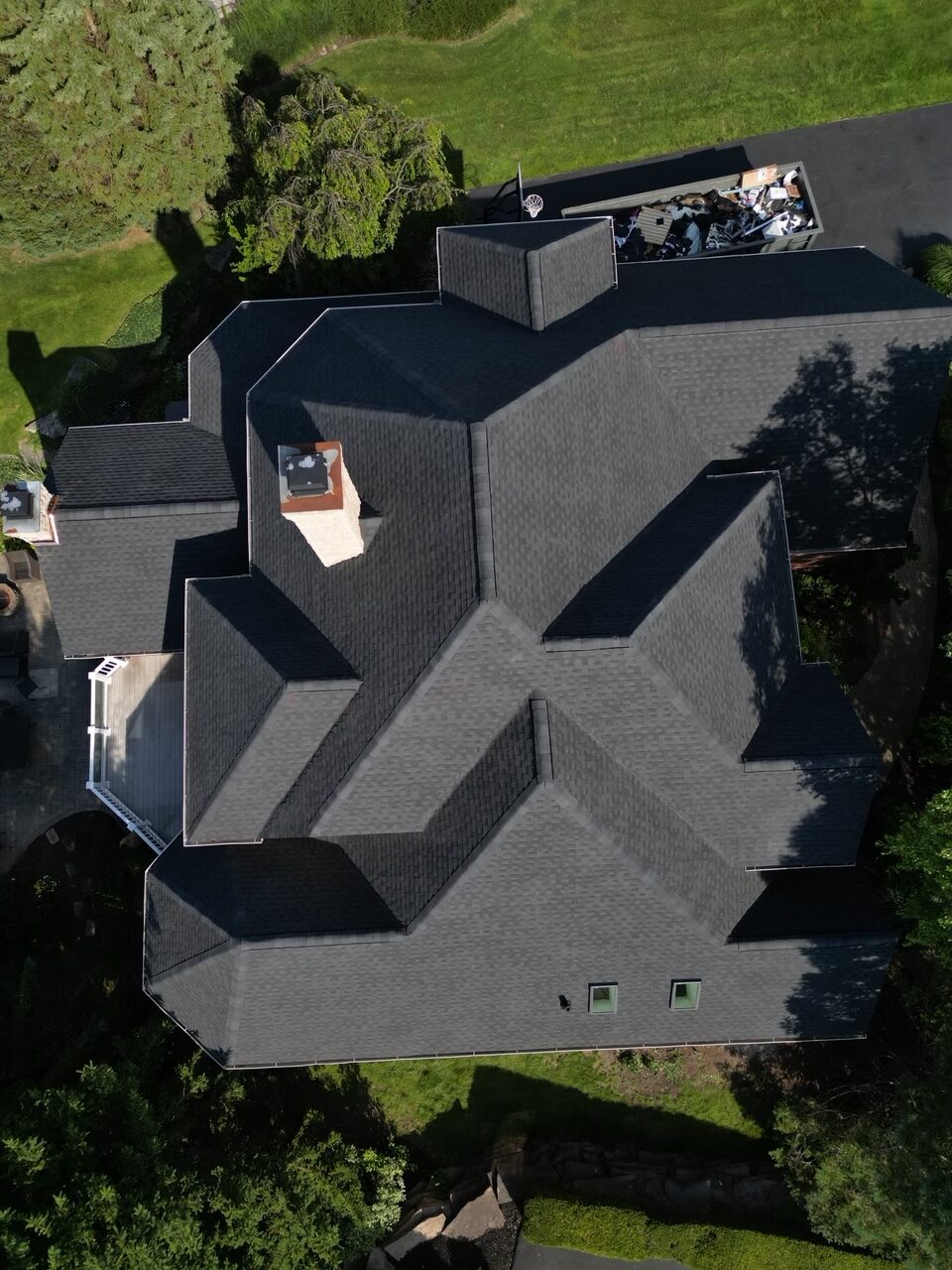Common Roofing Problems During the Winter
Winter can be one of the toughest times of the year for your roof. Between heavy snowfall, ice buildup, and fluctuating temperatures, even the most well-built roofs are put to the test. These conditions can create a variety of problems that threaten the safety and integrity of your home. Knowing what to watch for, and how to handle these issues, can save you from costly repairs and long-term damage.
Below, we’ll go over some of the most common winter roofing problems, what causes them, and how you can protect your home before small issues become big ones.
Snow Damage
During the winter, heavy snow accumulating on your roof can severely cause damage. The home’s foundation may not be able to support the weight of the snow and cause the roof to collapse.
Ways to prevent snow damage include removing the snow manually with a shovel or a “roof rake.”
When removing snow manually with a shovel, be careful of the dangers on your roof. The roof may be slippery and unsafe to climb or walk around on. Also, removing snow with a shovel could potentially damage your shingles.
Using a roof rake is a safer method than climbing a ladder and walking on your roof. You can purchase them from a home improvement store or your local hardware store. From the ground, you can pull snow down around the home. We recommend going as far up as your rake extensions will let you. This will also help with ice dams that may occur.
Another way to safely remove snow from the roof is to contact a roofing professional who has the proper tools and experience to remove snow without damaging the structure. Professional snow removal is especially important for older roofs or those with complex designs that are difficult to access safely.
Ice Dams
Ice dams occur when heavy snow buildup starts to melt during the day and then refreezes when the temperatures drop in the evening. When the melting and refreezing happen over several days, it is very common for the melted snow and ice to build up under the shingles. Eventually, water will enter the attic, causing damage to your ceilings, walls, and belongings.
To prevent ice damming, remove the snow about six feet up from the eave after a heavy snowfall and keep that area as clear as possible.
Keep your gutters clean. Cleaning your gutters in the spring and a couple of times in the fall will help prevent ice dams and prolong the life of your gutter system.
You can also install heat cables in your gutters and downspouts to keep the system from freezing and allow water to travel freely.
If you think you have an ice dam forming, you can apply calcium chloride to the area to melt the ice. Be aware that calcium chloride can harm vegetation and concrete, so use it sparingly. You can fill a leg of pantyhose with calcium chloride and lay it lengthwise across the ice dam to form a tunnel that allows melted water to drain safely off the roof.
If you have an ice dam that is out of control, call a roofing expert to safely remove it and prevent further damage.
Condensation
Condensation occurs when warm indoor air meets cold roof surfaces. This typically happens in your attic. Having a properly insulated attic will usually stop condensation.
Condensation can creep into the crevices of your roof, wooden frames, and metal parts, leading to damage over time. It can also contribute to mold growth and attract insects. Ensuring your attic is well-insulated and properly ventilated helps reduce moisture buildup. Bathroom vents should also exhaust air outside the attic, not into it.
Flashing Damage
Flashing is the thin metal installed around chimneys, skylights, and vents to seal gaps where the roof meets vertical structures. During winter, flashing can crack or separate due to temperature changes and ice buildup. When this happens, water can seep into your home and cause leaks or rot.
Inspect your flashing before the cold season begins and reseal or replace any sections that appear loose or corroded. Professional roofers can also install ice and water barriers around these vulnerable areas for added protection.
Shingle Damage
Freezing temperatures, snow, and high winds can take a toll on your shingles. They may become brittle, crack, or even loosen, leaving your roof exposed. Once shingles are compromised, water can easily infiltrate the roof deck, leading to leaks and interior water damage.
To avoid this, schedule a professional inspection before winter arrives. A roofer can replace damaged shingles, apply protective coatings, and ensure all flashing and sealants are intact. If you notice missing shingles or water stains indoors during winter, contact a roofing company right away to prevent the problem from worsening.
Clogged Gutters and Downspouts
Clogged gutters are one of the most common causes of winter roofing issues. When leaves and debris block water flow, melting snow has nowhere to go and refreezes in the gutters. This not only adds weight to your roof’s edge but also contributes to ice dam formation.
Before the first snow falls, clean your gutters thoroughly or have a professional do it for you. Installing gutter guards can also help reduce buildup and make seasonal maintenance easier.
Attic Ventilation Issues
Poor attic ventilation can create uneven roof temperatures that contribute to condensation and ice damming. When warm air is trapped inside the attic, it melts the snow on the roof’s surface, which then refreezes at the edges. Proper airflow allows warm air to escape and keeps roof temperatures balanced.
Consider adding ridge vents, soffit vents, or attic fans to improve ventilation. A roofing contractor can assess your attic’s airflow and recommend the right setup for your home.
Protect Your Roof During Winter
Winter can be especially harsh on your roofing system, but with regular maintenance and timely repairs, you can prevent most problems before they start. Inspect your roof in the fall, keep your gutters clear, and address snow and ice buildup as soon as it appears. If you ever feel uncertain about performing roof maintenance yourself, contact a licensed roofing professional to handle the job safely. By staying proactive, you can protect your roof, extend its lifespan, and enjoy a safe, comfortable home all winter long.
Need roofing services for your home in southeast Michigan? If so, contact American Standard Roofing today.
 (248) 350-2323
(248) 350-2323 